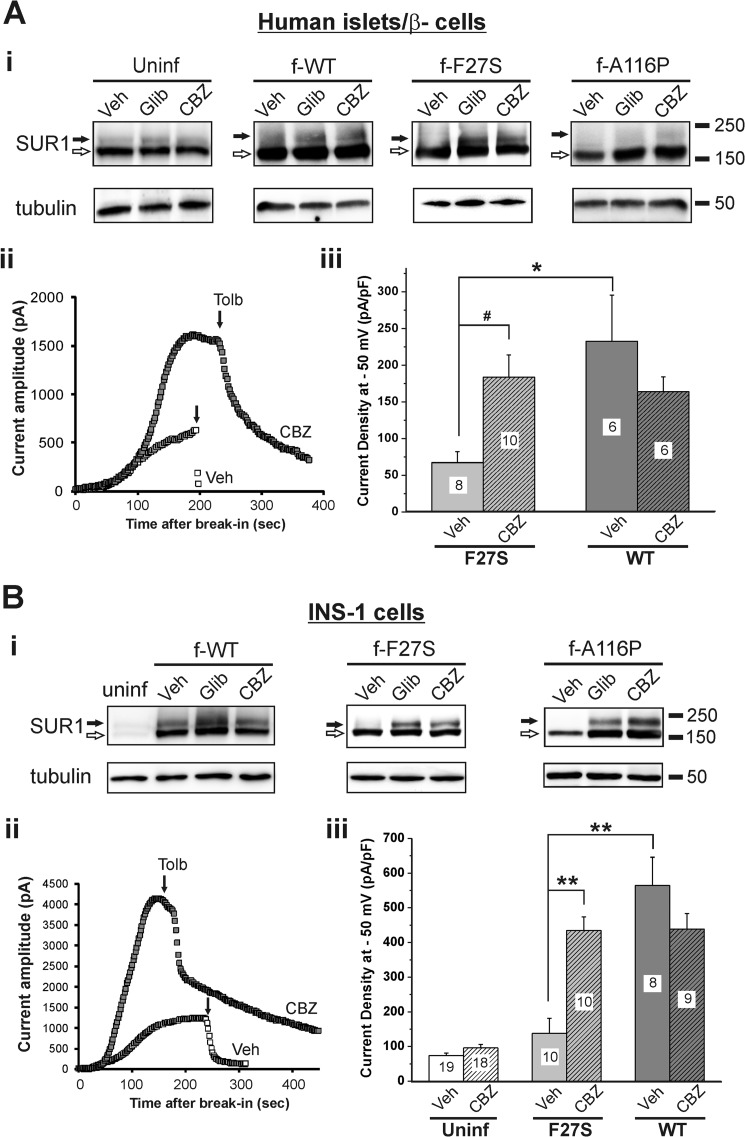FIGURE 7.
Carbamazepine restores surface expression and function of trafficking-impaired SUR1 mutants in β-cells. A, panel i, representative SUR1 blots from uninfected human islets (probed with anti-SUR1 antibody) and human islets infected with adenoviruses carrying WT Kir6.2 and WT or F27S or A116P mutant f-SUR1 cDNAs (probed with anti-FLAG antibody) and treated with DMSO, 5 μm glibenclamide (Glib), or 10 μm carbamazepine (CBZ) for 16 h. Panel ii, representative whole-cell patch clamp recordings measuring KATP current density in control and drug-treated human β-cells infected with the F27S mutant viruses (recordings are from two cells with similar membrane capacitance of ∼10 picofarads (pF)). Dissociated human islet β-cells were identified by staining with 0.01% dithizone briefly followed by washout before recording. KATP currents were activated upon perfusion with Tyrode's solution containing 200 μm diazoxide. Tolbutamide (Tolb) (300 μm) was used to verify that the currents observed were from KATP channels. Panel iii, the averaged current density measured by whole-cell recordings. Each bar represents the mean ± S.E. of the number of patches shown in the bar. B, same as in A except INS-1 cells were used for the experiments. #, p < 0.05; *, p < 0.01; **, p < 0.001 by one-way analysis of variance with Bonferroni post hoc test. Error bars represent S.E. uninf, uninfected; Veh, vehicle.

